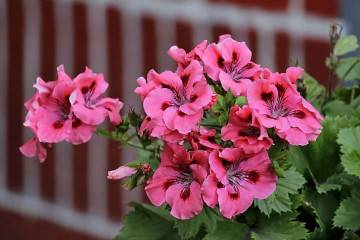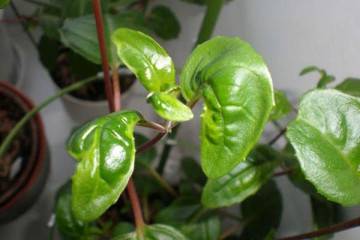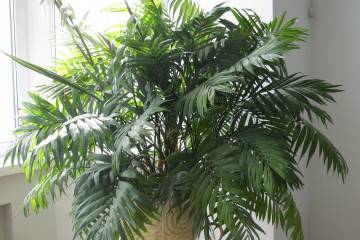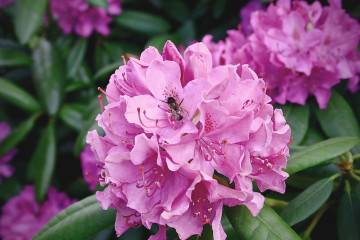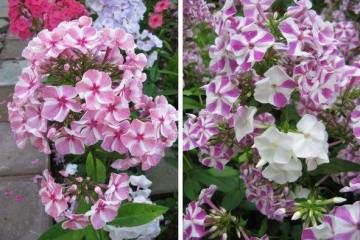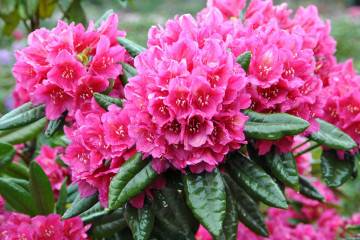Why do the leaves of rhododendron turn yellow and what to do
Content:
Rhododendron, also known as azalea among gardeners, is an evergreen plant in the Heather family. The shrub attracts with its decorative qualities: glossy bright green leaves and exuberant flowering. Some shrubs grow up to 30 m, and creeping specimens are also found. Rhododendron leaves are a major indicator of plant health. Their yellowing requires urgent action to save the plant.
The main causes of yellowing rhododendron
Azalea leaves deteriorate for many reasons: improper care, insect damage, various diseases. To find out why the leaves of rhododendron turn yellow, you need to carefully examine the shrub for mechanical damage and the presence of parasites.
Failure to comply with watering rules
Azalea loves moisture, but not too much. To understand why the leaves of rhododendron fall, you need to pay attention to the condition of the soil. If a lump of soil crumbles in your hands, you should water it. With a lack of water, azalea foliage begins to lose turgor and wither.
If it was possible to form a dense lump from the ground, the soil moisture regime was selected correctly. To maintain optimal humidity, shrubs are best placed next to water bodies or tall plants (for example, pine). This will protect the plant from drying out.
Spray irrigation can provide normal moisture. Acetic, citric or oxalic acid is added to the water for acidification.
Lighting
Why did the leaves of the rhododendron turn yellow? The shrub does not like open areas under the sun. In this case, you need to make artificial shading using an awning or polycarbonate sheets. But it is better to think in advance about the landing site. Plots near buildings in the country, large shrubs and trees are ideal for a bush. The optimum level of illumination is partial shade.
Damage to the root system
The roots of rhododendron are located close to the surface of the earth, so they can be easily damaged during loosening and removing weeds. The consequence of this is wilting and falling foliage.
Poor quality soil
Representatives of the Heather family grow well in an acidic environment. In order for the plant to receive a sufficient amount of nutrients from the soil, sour high peat must be used. The soil can also be acidified with electrolyte and colloidal sulfur.
Poor fertilization
Azalea is a demanding plant and using the wrong fertilizer can kill the shrub. To prevent this from happening, you need to purchase a special feeding for the Heathers.
Top dressing is applied in the first month of summer, citovit or ferovit are suitable. In the fall, formulations with potassium sulfate are used.You can apply complex fertilizing, for example, kemira-wagon.
Inflorescences not removed
In order for the plant to gain enough strength for the next season, you need to remove the faded buds. This will help set the lateral buds and bloom profusely. Otherwise, the bush will begin to waste energy on seeds, which will adversely affect the appearance of the azalea.
Inflorescences break off easily with your hands, you do not need to use scissors for this. At the end of the procedure, the shrub is abundantly watered and fed with a phosphorus-potassium composition.
Yellowing of foliage due to pests
Harmful insects are a common cause of the death of rhododendron. When viewed on the foliage, spots, dots and other damage are found. Most often, the plant is precipitated:
- bedbugs;
- spider mite;
- black thrips;
- aphid;
- Khrushch.
Rhododendron bug
The pest spoils the leaves: they change color, turn pale, become lethargic, and later turn yellow and acquire a brown tint. Massive defeat leads to curling and shedding of foliage.
The bush is treated with karbofos insecticides, BI-58. Several procedures are carried out in accordance with the instructions.
Mealybug
The insect reproduces rapidly in dry and warm places. High humidity interferes with this process. The pest looks like a small cotton ball, which is fixed on the surface of the foliage and in internodes.
Aphid
Azalea leaves, when aphids are affected, gradually brighten, turn yellow and fall off. Aphids can be found on the underside of leaves. The plant is treated with Nurel D, Confidor, Actellik.
Black thrips
Gray holes are formed at the top of the sheet, black holes at the bottom. The damaged parts of the rhododendron turn gray, then yellow, and then fall off. A 0.3% solution of nicotinic acid is used against an insect.
Khrushch
This is the name of the beetle larvae. The pest damages the roots of the azalea, causing the foliage to turn yellow and crumble. With a massive lesion, shoots dry out. The crown of the bush should be treated with the means of aktar, prestige or anti-crunch.
What diseases can cause yellowing of leaves
The yellowing of foliage and the appearance of stains on it can be caused by fungal diseases. The affected area rapidly expands, as a result of which the entire crown fades. The most dangerous disease for rhododendron is septoria disease.
Septoria
With this disease, small red spots appear in the center of the leaves, which soon increase and turn white. The foliage turns yellow and falls off. Without treatment, a bare stem remains from the bush.
It is necessary to cut off the damaged parts of the shrub, then spray the plant with the fungicide ridomil gold. In the spring, the bush is treated with Bordeaux liquid.
Chlorosis
Azalea leaves often turn yellow due to chlorosis. This happens in the springtime. The disease develops due to a lack of iron and nitrogen in the soil. The leaves brighten, turn yellow and become covered with characteristic spots:
- due to a nitrogen deficiency or abundant watering along the edges of the leaf plate and at the tips, yellow spots;
- with a lack of iron, magnesium, alkalization of the earth or growth of roots between the veins on the leaf, bright yellow spots.
Fusarium
Fungi attack the root system. At the initial stage, the foliage turns yellow and dries up, then the shoots deteriorate.
What to do if rhododendron has yellow leaves: the plant needs immediate treatment with a fungicide, otherwise it will quickly die. The bush must be sprayed with one of the ordan or foreshortening fungicides. You can use Bordeaux liquid.
What to do to save the plant
What to do if the leaves of a rhododendron turn yellow? The set of measures depends on what caused the damage to the plant.
Azalea rescue activities boil down to the following:
- dryness of the soil is easy to eliminate by watering the bush abundantly. Waterlogged soil must be left as it is so that it dries naturally;
- in case of mechanical damage to the roots, it is enough to cut off the yellow leaves;
- specialized means are used against various pests;
- in case of a fungal disease, various fungicidal preparations are used, which are presented in a wide range;
- with direct sunlight on the bush, you need to create an artificial darkening.
What is the danger, rhododendron turns yellow: what to do
If you do not help the rhododendron in time, dryness from the leaves will transfer to the branches. Further, the lesion will spread to the root system, and the plant will die.
It is important to establish in time the cause of the wilting of the leaves and to deal with its elimination. The earlier treatment is started, the more chances you have to keep the shrub.
Prophylaxis
The best means of protection against pests is spraying in accordance with the instructions for the preparation. You also need to establish an optimal irrigation regime, avoiding waterlogging or drought of the soil.
Plants with a strong root system that grow to the sides should not be planted next to the azalea. Rhododendron roots are superficial and easily damaged in such a neighborhood. It is not necessary to loosen the ground next to the azalea, a layer of mulch is enough.
An effective method of preventing fungal diseases is watering the bush with a solution of potassium permanganate every 60 days. The procedure will protect the rhododendron from fusarium and other diseases.
Azalea is a whimsical and gentle plant that requires careful care and pest control. The shrub can be protected by regular preventive treatment with special agents. In order for the rhododendron to grow well and delight in lush flowering, you should take care of the planting site and the necessary fertilizers in advance. Optimal watering, the absence of the scorching sun and the composition of the soil are the most important conditions for a healthy shrub.




